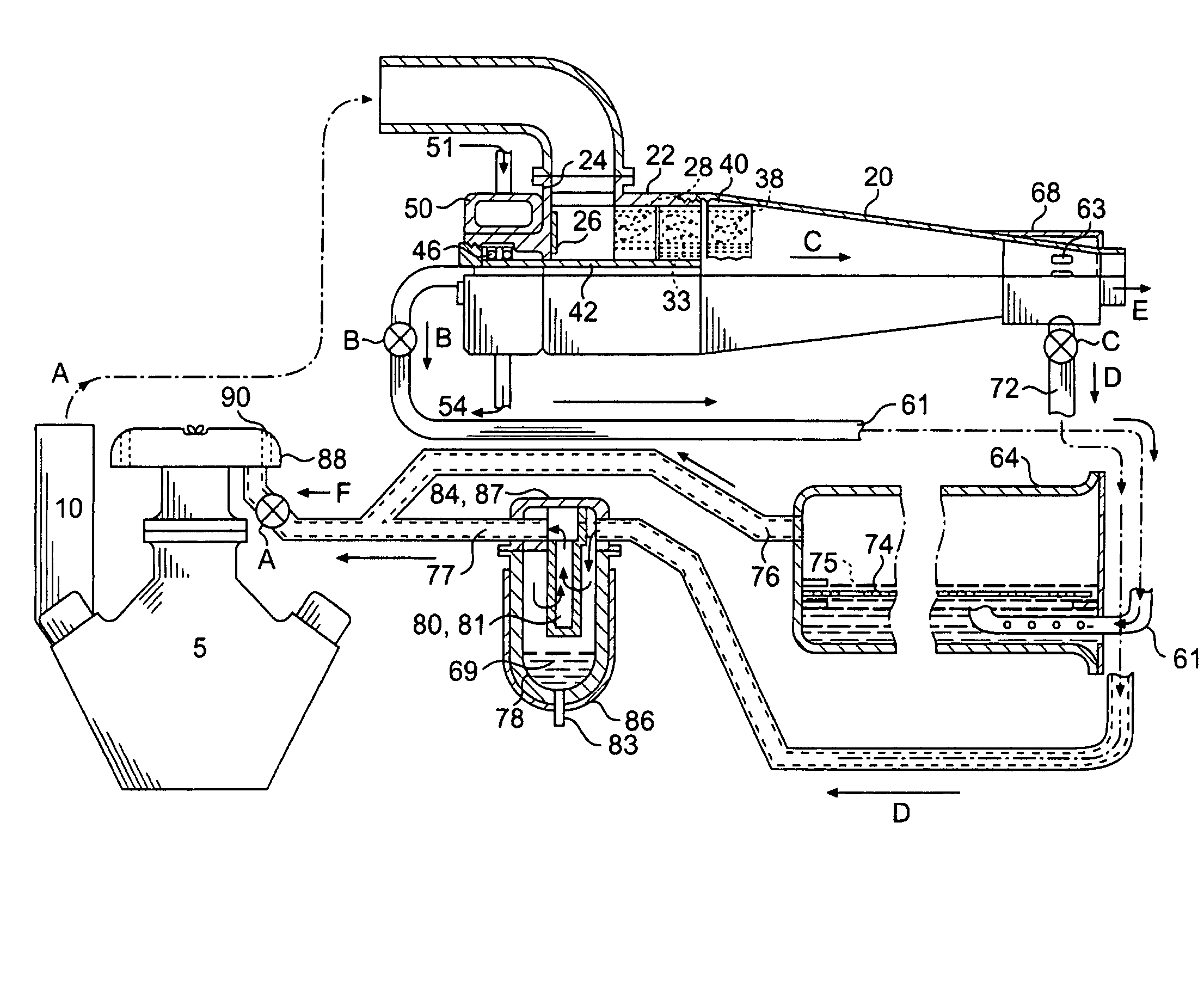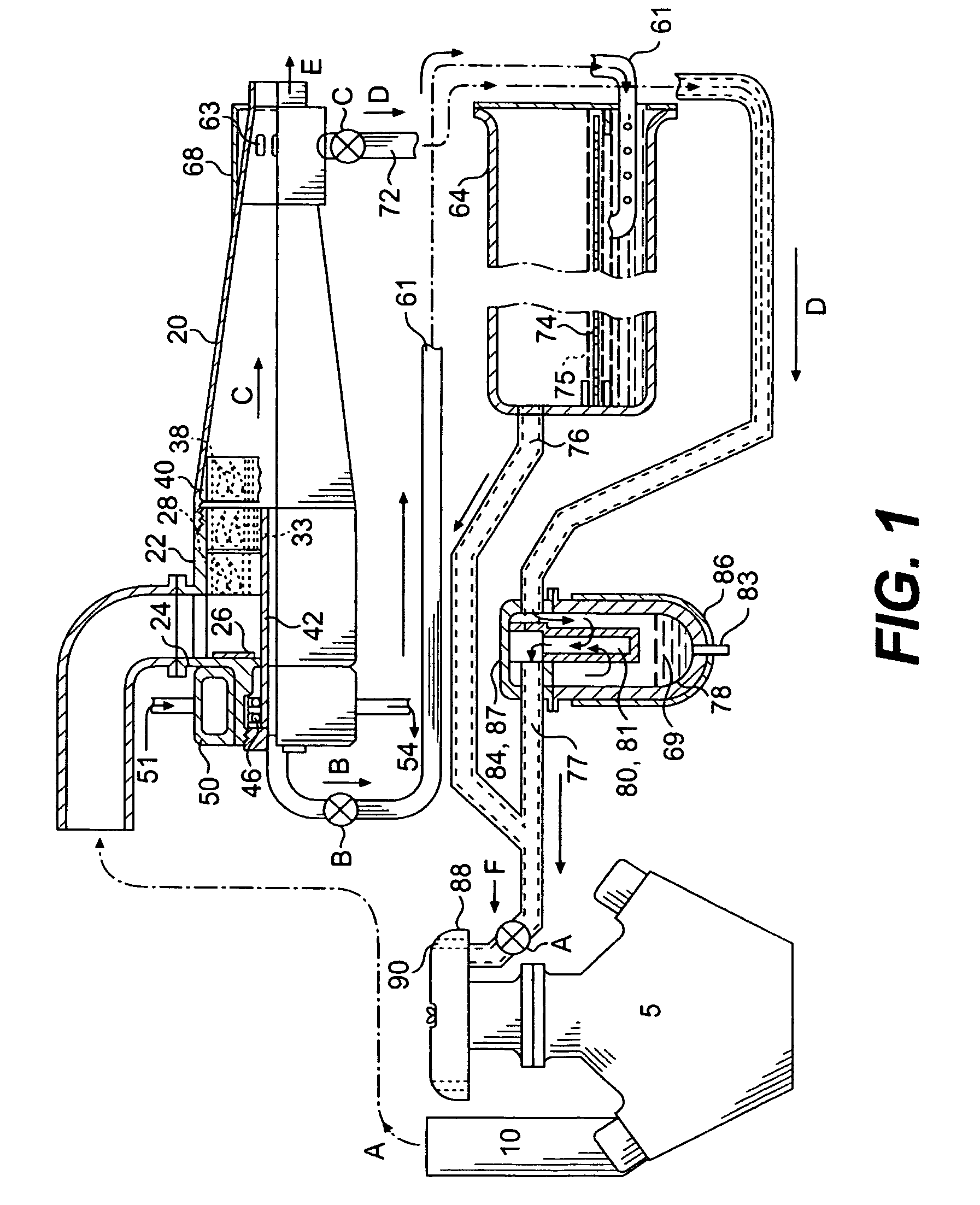Nitrogen inerting system for explosion prevention in aircraft fuel tank and oxygenating system for improving combustion efficiency of aerospace rockets/ aircraft engines
a technology of aircraft fuel tank and oxygenating system, which is applied in the direction of liquid degasification, separation processes, containers, etc., can solve the problems of global warming, sacrificing the airplane's overall system design improvement, and increasing the overall cost of manufacture, reliability and operation of such inerting systems, etc., to achieve high speed and increase rotational speed
- Summary
- Abstract
- Description
- Claims
- Application Information
AI Technical Summary
Benefits of technology
Problems solved by technology
Method used
Image
Examples
Embodiment Construction
[0029]The present invention of a Nitrogen Inerting System that may be used on airplane's and other hydrocarbon fuel tanks and similar Applications required in Anaerobic Digesters in the biomass gas recovery and other processes, or similar Oxygenating Applications as required in Coal-Power Plants, Steel Plant Blast Furnaces for energy efficiency, NOx gas prevention, CO2 recovery from their exhaust & other industrial processes, is illustrated in FIG. 1(B) of the drawings. The alphabetical reference characters A-J designate the gases / gas mixtures as follows:
[0030]
ArrowGasesA:Compressed Air from Airplane air conditioning intakeline (A1) or Auxiliary AirCompressor (A2) feeds to rotate the turbine impeller atvery high speedB:Lighter inner core of gases comprising primarily inert gas:nitrogen, are fed into the Inert gas tank for storageC:Heavier of the heavy outer layer of gas mixture of non-combustible gases, such as, Argon, and the lighter of theheavier and combustible gases, such as, ox...
PUM
| Property | Measurement | Unit |
|---|---|---|
| angle | aaaaa | aaaaa |
| pressure | aaaaa | aaaaa |
| combustion efficiency | aaaaa | aaaaa |
Abstract
Description
Claims
Application Information
 Login to View More
Login to View More - R&D
- Intellectual Property
- Life Sciences
- Materials
- Tech Scout
- Unparalleled Data Quality
- Higher Quality Content
- 60% Fewer Hallucinations
Browse by: Latest US Patents, China's latest patents, Technical Efficacy Thesaurus, Application Domain, Technology Topic, Popular Technical Reports.
© 2025 PatSnap. All rights reserved.Legal|Privacy policy|Modern Slavery Act Transparency Statement|Sitemap|About US| Contact US: help@patsnap.com



